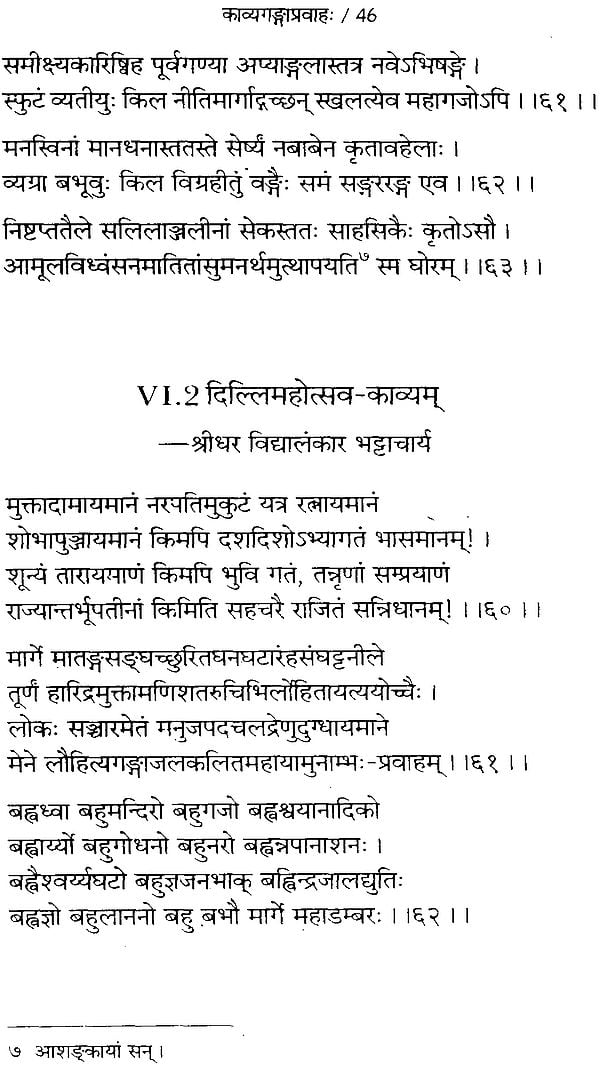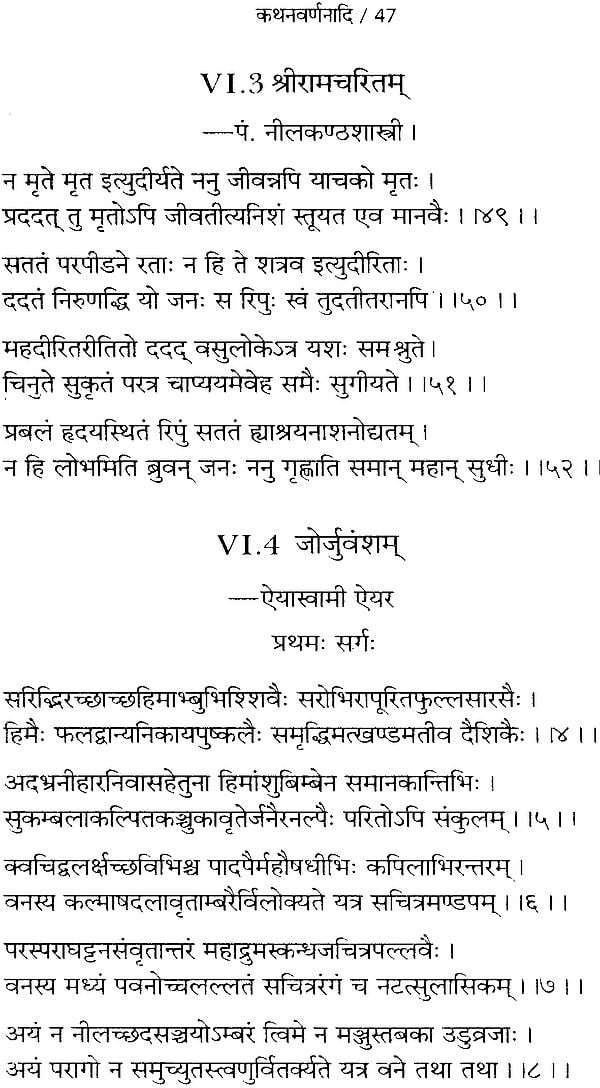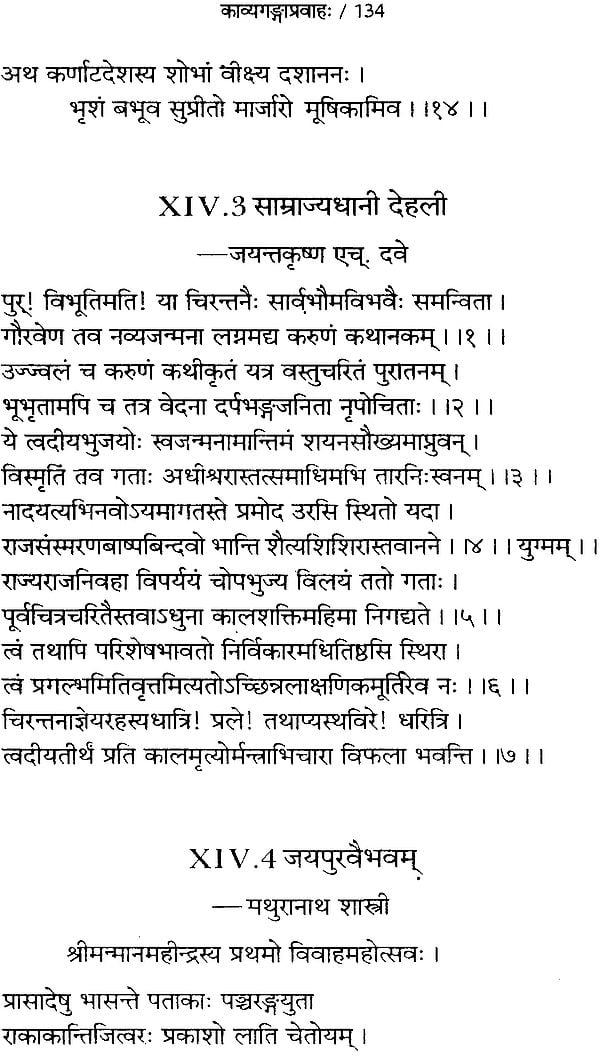
काव्यगंगाप्रवाह: An Anthology of Twentieth Century Sanskrit Poetry (An Old and Rare Book)
Book Specification
| Item Code: | NZK895 |
| Author: | श्रीराम वेलणकर (Shri Ram Velankar) |
| Publisher: | SAHITYA AKADEMI, DELHI |
| Language: | Sanskrit Only |
| Edition: | 1995 |
| ISBN: | 8172017782 |
| Pages: | 188 |
| Cover: | Hardcover |
| Other Details | 9.0 inch x 5.5 inch |
| Weight | 310 gm |
Book Description
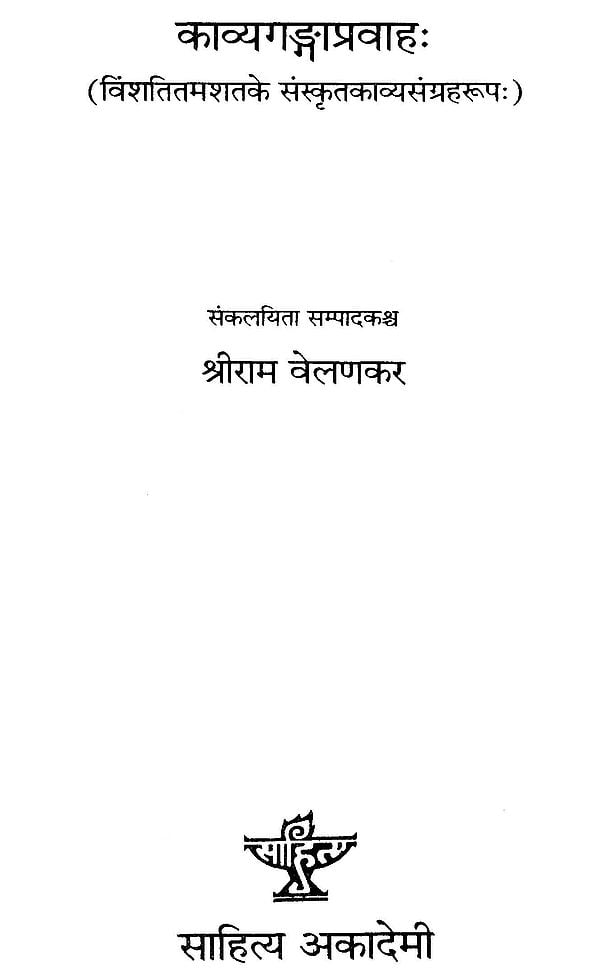
About the Book
Kavya Ganga Pravaha, Compiled and edited by Sriram Bhikaji Velankar (b. 1915), is an anthology of the twentieth century Sanskrit Poetry. It consists of 173 poems of 163 poets representing almost all the states of India.
Classified into eighteen streams such as devotional, patriotism, wit and humour, didactic and Subhashitas etc., the anthology brings out a variety of subjects and styles. It also articulates the Sanskrit poets' changed outlook and enriched perception of the modern literary trends and technological advances.
About the Author
The editor Sri Sriram Bhikaji Velankar (b. 1915) has been an eminent writer and critic in Sanskrit. He started his professional career as a civil servant and was the Postmaster General from 1966 to 1970, and later served as Additional Secretary, Ministry of Communications Government of India from 1972 to1973. He has to his credit more than thirty publications. His major works in Sanskrit include Jawahar Chintanam (poetry–1966), Gita Girvanam (on music–1970); and Chhatrapati Shree Shivarajah (plays–1974).
General Introduction
Preliminary
Sahitya Akademi (National Academy of Letters) entrusted the work of compiling an anthology of Sanskrit poetry in India in 20th Century to me in June 1987 after a prolonged correspondence. After I had done considerable work, they informed me in December 1987 that Sanskrit Translations from other languages should not be included. After I submitted the compilation in June 88, they informed me in June 1990 that the anthology should be restricted to the period upto 1960. Again 2/3 of the work was thus rendered unusable. I have, however, included 2 pieces of 1961 as necessary.
I have accordingly prepared this anthology of 174 pieces by about 163 poets to suit their requirements.
I had originally submitted 463 poems by 326 poets and since Post-Independence poems predominated, the original introduction was based on that collection. Now the basis has changed. However, the classification which I had adopted in 18 section to bring out the variety of subjects and styles. I have adhered to in this smaller selection. In some sections, naturally now there are very few poems to consider them as fully representative. I can only beg to be excused.
The material collected showed that there is no lack of men and women Sanskrit poets in India in this century. On the other hand, their outlook is changed, their experience is enriched and they take note of the modern materialistic trends and technological advances.
Sandhis are not now necessarily adhered to even in poems. Metres used encompass a wider field. Expression is more graphic, more emotional; not merely traditional.
Names of poets are printed without titles or upadhis, even addresses. Many names suggest that they are variations of names noted elsewhere with a variant. Unless, however, I was certain it is the same poet, distinct identity is presumed.
Sources:
The following are the sources availed of:
1. My accumulation of books over the last 50 years;
2. Books sent to me on hearing of the project;
3. Various libraries consulted by me over a wide area, and
4. Periodicals.
Extent:
Many poems could not be given in full and extracts have been taken.
Subjects:
Variety of subjects chosen by the poets for their compositions is amazing. Apart from sectional division followed by me, within the same section, subjects vary. Modern Sanskrit poetry is obviously not fettered by any limitations in this respect.
Certain poems classified under one section could as well fall under another section. I have followed certain ideas in this regard and the classification is often subjective. I hope it will not affect the appreciation of the poems.
Abundance:
In modern times poetry is receiving less attention from society. Consequently less poems are published; this is so in modern popular languages. Some periodicals do not publish poems at all.
In this context the abundance of material particularly in the post-independence India is revealing. It has also an advantage over modern languages. A poet in Kerala can have his Sanskrit poem published in Lucknow or Varanasi. This fact also encourages Sanskrit poets possibly.
In selecting poems, it may have happened that a prolific poet has only a single piece here. It does not mean his other poems are not note-worthy; selection has to be wider based giving representation to all regions and yet it has to be limited by the overall constraints. If the same poet has contributions falling under different sections, he probably has found more than one piece selected.
Sometimes on the same subject more than one poem was available in such cases, wider field has been given the preference. The Anthology is made as representative as possible within the restraints imposed.
Introductions to Sections:
Each section has an introduction in English as well as Sanskrit. English introductions are given at one place in the beginning. Sanskrit introductions are attached to each section. One is not a translation of the other as this general introduction also will testify.
Poets:
Only of Two pieces, exact name of the poet is not available. सोमनाथसमञ्यास्तव: (I-11) and निबन्धृनामधामनिन्हव: (XIII-2)
States represented:
In the period A.D. 1901 to A.D. 1960 I could get representatives of all the states except Goa and NE States (excluding Assam). This point is not important enough except to show my limitations.
Style:
It will be noticed even in this small anthology that the style greatly varies from poet to poet. Some write simple Sanskrit; others ornate. One tries to communicate, the other exhibits. Each probably knows his strength and puts it to use. Apology for mistakes:
It is possible that in spite of the best efforts on my part some inaccuracies may be found in the printed pieces due to faulty printing of the originals available to me, obscure expressions used by poets, my failing eyesight due to old age or just oversight I beg to be excused for the same.
Finally I thank all those who have helped me in my efforts. I also thank Sahitya Akademi since they expected me to complete the work, even at the age of 76.
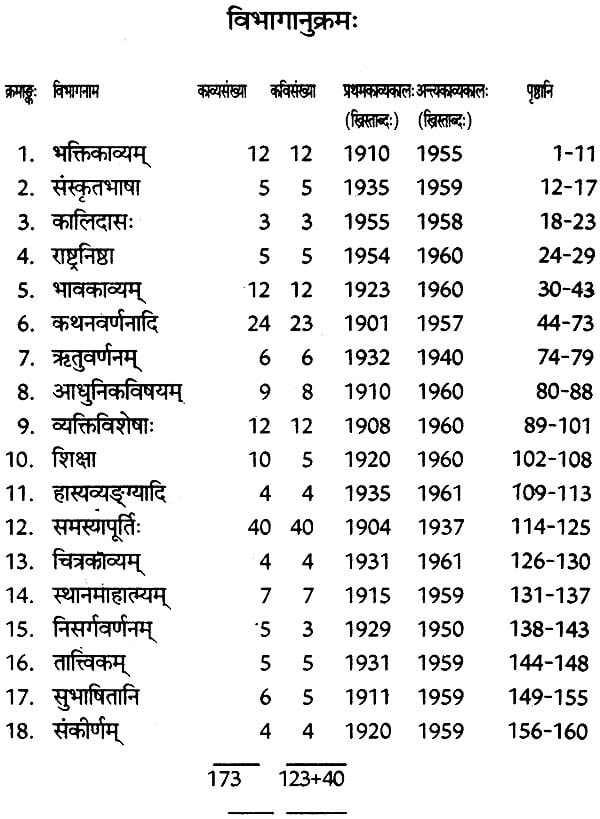
Sample Pages
